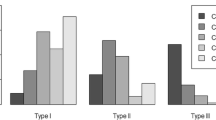Abstract
Classification of higher education institutions (HEIs) of a country allows viewing higher education as a differentiated system which respects the diversity of purposes and aspirations of different HEIs. Classification is fundamentally different from ranking, which aims to rank universities in order with higher ranked HEIs being “better” than lower ranked ones. In classification, the universities in a class are grouped by their purpose and mission, and no attempt is made to rank them. Carnegie Classification of universities in the USA is the oldest classification system, which groups universities into a few categories like Research Universities, Masters Universities, Baccalaureate Universities, and Secondary. This classification has been found extremely useful over decades for various purposes including policy making and planning. This has thus motivated similar exercises in many other countries, particularly for research universities. In this paper, we evolve an approach to classify research universities in India, based on the Carnegie Classification approach. We propose a simple basic criterion for identifying research universities, and apply it to the top 100 universities and top 100 engineering institutions in India. Using this criteria, 40 universities and 32 engineering institutions were identified as research HEIs. Based on the data on the level of research activity in these HEIs, we apply a clustering approach similar to the one Carnegie uses to group research HEIs into two sub-categories, viz. “highest research activity” and “moderate research activity”. The clustering approach identified six universities and eight engineering institutions in India to be in the highest research activity category. The level of research activity uses data on the number of full time PhD students, the number of faculty, research grants, and publications.


Similar content being viewed by others
References
Altbach, P.G. (2007). Empires of Knowledge and Development, in World Class Worldwide, eds: Philip G Altbach and Jorge Balan, Johns Hopkins Press, 2007.
Carnegie (2000), The Carnegie Classification of Institutions of Higher Education, http://carnegieclassifications.iu.edu/downloads/2000_edition_data_printable.pdf
Carnegie (2016). 2015 update – facts and figures, http://carnegieclassifications.iu.edu/downloads/CCIHE2015-FactsFigures-01Feb16.pdf
Duda, R.O., Hart, P.E., and Stork David G. (2000).Pattern classification, 2nd Ed., Wiley, 2000.
Hermanowicz, J. C. (2005). Classifying universities and their departments: a social world perspective. The Journal of Higher Education, 2005, 26–55.
Kosar, R., & Scott, D. W. (2018). Examining the Carnegie Classification methodology for research universities. Statistics and Public Policy, 5(1), 1–12.
Liu, N.C. (2006). Classification of Chinese Higher Education Institutions, online on oecd.org.
Liu, N.C. (2007). Research Universities in China, in World Class Worldwide, eds: Philip G Altbach and Jorge Balan, Johns Hopkins Press.
McCormick, A. C., and Borden, V. M. H. (2017). Higher education institutions, types and classifications of. In J.C. Shin, P. Teixeira (eds.), Encyclopaedia of international higher education systems and institutions, https://doi.org/10.1007/978-94-017-9553-1_22-1
McCormick, A.C., and Zhao, C.-M. (2005). Rethinking and reframing the Carnegie Classification, change, sept/Oct 2005.
NAAC website. https://assessmentonline.naac.gov.in/public/index.php/hei_dashboard
NIRF (2015). A Methodology for Ranking of Universities and Colleges in India, 2015, https://www.nirfindia.org/Docs/Ranking%20Framework%20for%20Universities%20and%20Colleges.pdf
Ramsden, P. (1999). Predicting institutional research performance from published indicators: A test of a classification of Australian university types. Higher Education, 37, 341–358.
Shin, J. C. (2009). Classifying higher education institutions in Korea: a performance-based approach. Higher Education, 57, 247–266.
UGC Website. https://www.ugc.ac.in/stats.aspx
Van Vught Kaiser, F.A., File, F., Gaethgens, J. M., Peter, C., Westerheijden, R. (2010).U-Map: The European Classification of Higher Education Institutions, http://www.u-map.eu/U-MAP_report.pdf
Varghese, N. V. (2018). The new national rankings in India, International Higher Education, Number 93: spring 2018.
Acknowledgements
We would like to thank certain students of IIIT Delhi for their help—Harsh K Jain and Ayush Gupta for extracting data from NIRF site, and Parimi Viraj for doing the clustering analysis. We will also like to thank Roshan Mishra from IIIT Delhi for his help in validating the data. We are thankful to the help provided by Prof. Saket Anand of IIIT-Delhi regarding the PCA and clustering analyses.
Author information
Authors and Affiliations
Corresponding author
Additional information
Publisher’s note
Springer Nature remains neutral with regard to jurisdictional claims in published maps and institutional affiliations.
Appendix 1. HEIs identified as Research HEIs using the basic criteria
Appendix 1. HEIs identified as Research HEIs using the basic criteria
Rights and permissions
About this article
Cite this article
Jalote, P., Jain, B.N. & Sopory, S. Classification for research universities in India. High Educ 79, 225–241 (2020). https://doi.org/10.1007/s10734-019-00406-3
Published:
Issue Date:
DOI: https://doi.org/10.1007/s10734-019-00406-3




